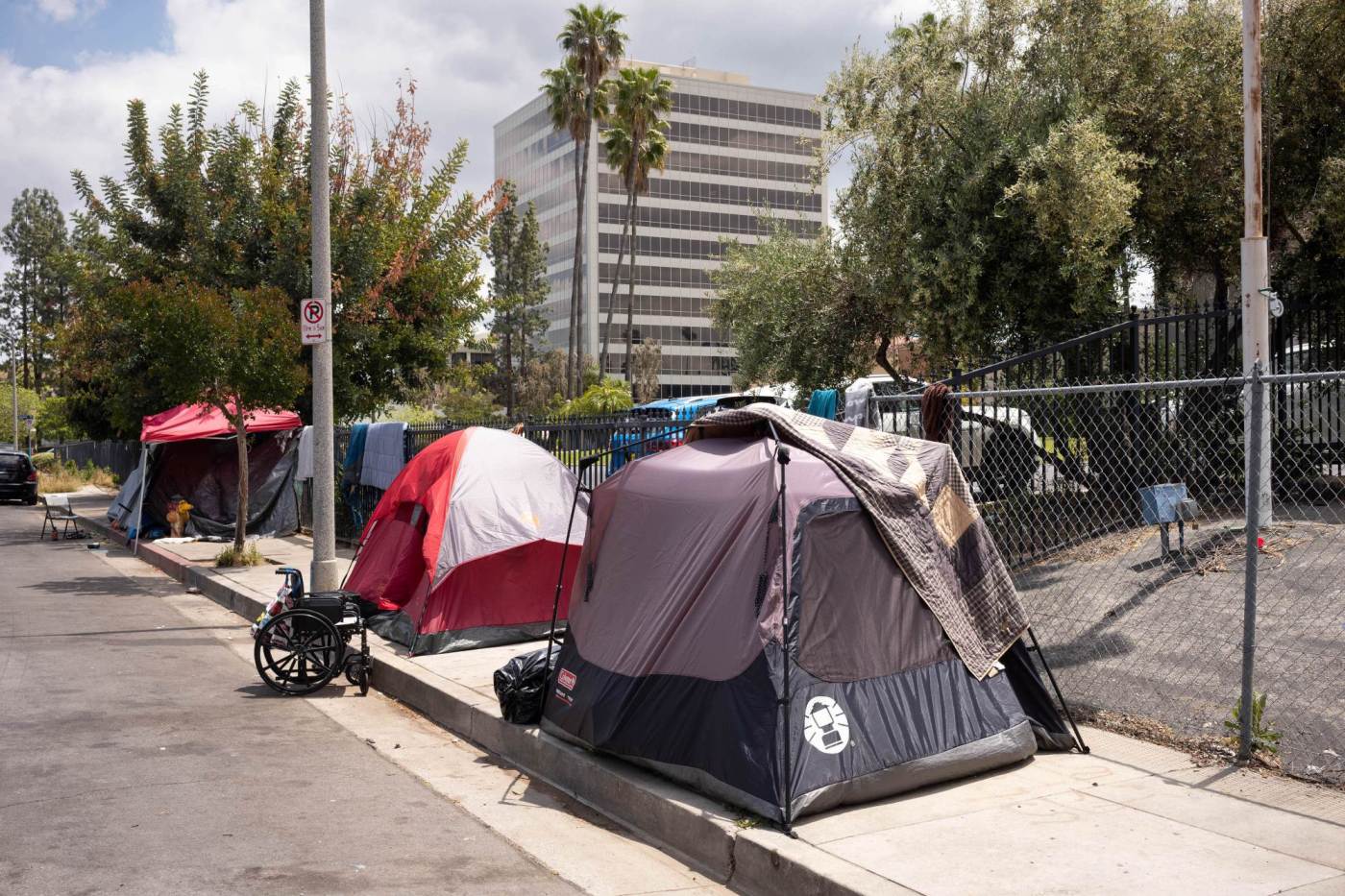Five Southland mayors, including Los Angeles’s Karen Bass, were among the 13 California Big City Mayors who met with Gov. Gavin Newsom and key legislators in Sacramento on Wednesday, May 17, to seek more homeless funding for the state’s Homekey program, as well as mental health and substance abuse beds.
The other Southern California mayors were Anaheim’s Ashleigh Aitken, Irvine’s Farrah Khan, Long Beach’s Rex Richardson and Riverside’s Patricia Lock Dawson.
“This is the number one crisis we are facing in California,” Bass said during a news conference in Sacramento. “The only way we will solve it is by acting together with locked arms, as we say in Los Angeles, to bring folks inside for good.”
Bass said no mayor can “work alone” to face the homelessness crisis, and that’s why recent state investments and partnerships have been so critical.
“While this year’s state budget must be difficult, the need for housing interventions and services must remain a top priority,” Bass said. “We need to ensure additional funding in this budget to make an even bigger impact.”
The California Big City Mayors, a coalition of mayors of the state’s 13 most populous cities, issued a letter to Newsom and state legislators last week, a day before he released a revised budget proposal for the 2023-24 fiscal year.
In the letter, the coalition insisted the homeless crisis continues to be its No. 1 priority, and the need to address homelessness should be reflected through the state’s budget.
“For this reason, we respectfully request — as our top budget priority — continuing and sustaining HHAP (Homeless Housing, Assistance and Prevention) funding with direct allocations for big cities,” the letter said, “with a minimum allocation of $2 billion per year in FY 23-24, 24-25 and 25-26 for a total of $6 billion.”
As Newsom’s administration and legislators develop policy to address homelessness, the coalition proposed a framework to aid in that effort, including flexibility in the use of state funding; permanent funding; focused goals; release of HHAP bonus funding; prioritizing increased bed capacity; quicker disbursement of funding; land use waivers; stabilizing annual allocations; and lastly, focusing funding where need is greatest.
The coalition also requested $1.5 billion for Homekey to ensure all applications in round three are funded.
“We have this crisis that has unfolded and we have some real momentum,” Richardson said during Thursday’s news conference, “and my message is we can’t turn back now.”
State funding has allowed Long Beach to implement innovative strategies, Richardson said, such as safe parking to use, drop-in sites and navigation centers. The city has also opened five Project Home Key and Room Key sites, with one more in the works.
Long Beach’s population of people who are homeless rose by 4.6%, to 3,447, this year compared to 2022, according to the results of the city’s annual point-in-time tally of those without permanent shelter.
Anaheim, meanwhile, has been able to reduce its unsheltered population by 30% since 2019, Aitken saidThe city wants to reduce the population by 70% by 2024. HHAP funding has played has helped Anaheim expand daily outreach by social workers who are on call seven days a week, 24 hours a day, and convert two motels into permanent supportive, non-congregate housing.
“We urge California to uphold its HHAP commitments to our cities and to those across California,” Aitken said, “because together we can address California’s greatest humanitarian crisis.”
But the state appears to have some financial troubles.
When Newsom released his “May Revise” on Friday, he also announced a $32 billion deficit in the state’s proposed budget for 2023-24 fiscal year, up from the $22.5 billion shortfall that was projected in his proposed January budget.
Newsom indicated spending reductions and pullbacks would be necessary to ensure a balanced budget.
But in terms of funding for homeless projects and cleaning up encampments, he said “we are not backing away” and his proposed budget would commit $3.7 billion to do so.
In his May Revise, $1 billion in one-time funding from the General Fund would be used for HHAP and focus on “reducing unsheltered homelessness,” including prioritizing spending on Homekey operating sustainability and Community Assistance, Recovery and Empowerment Act housing supports.
Newsom, according to his office, has invested $15.3 billion overall to address the homelessness crisis, including $3 billion for flexible aid to local government; $3 billion for Homekey; $2.2 billion for behavior health infrastructure; $1.5 billion for behavioral health bridge housing; $860 million for community care expansion; $750 million for encampment clean up grants; and $262 million for Project Roomkey.
Riverside has also been among those beneficiaries.
Using HHAP funding, that’s city’s mayor said, Riverside launched “Project Connect,” to serve those who are currently in the justice system or exiting the local detention center by connecting them with services they need to get their lives back on track and reduce recidivism. Riverside also launched a program in January to help end youth homelessness, Dawson said.
“We’re actively breaking this cycle of youth homelessness,” Dawson said, “giving our future generation the stability and support they need to thrive but most of all hope.”
Related Articles
U.S. Department of Justice shows support for Micah’s Way in lawsuit against Santa Ana
An army of obstacles stands between LA’s homeless students and the classroom
San Clemente prepares to hire private security for North Beach, close the sand at 10 p.m.
Inmate mistreatment, dirty conditions at LA County jail facility prompts contempt hearing
California’s Medicaid experiment spends to save — and help the homeless





